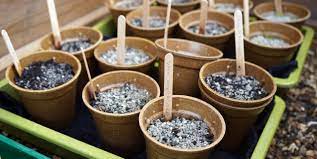In the realm of gardening and agriculture, the choice of growing containers plays a crucial role not only in plant health and growth but also in environmental impact. While traditional terracotta pots and wooden planters have long been favored, plastic growing containers have emerged as a sustainable solution offering a myriad of environmental and practical benefits. In this article, we delve into the advantages of plastic growing containers and their contribution to sustainable gardening practices.
- Durability And Longevity
One of the primary advantages of plastic growing containers is their durability and longevity. Unlike traditional materials such as terracotta or wood, plastic containers are resistant to cracking, chipping, and rotting. This durability ensures that plastic pots can be reused season after season, reducing the need for frequent replacements and ultimately minimizing waste.
- Lightweight And Portable
Plastic containers are significantly lighter than their ceramic or wooden counterparts, making them easier to handle and transport. This lightweight nature is particularly advantageous for urban gardeners or those with limited mobility, allowing for more flexible arrangements and easier relocation of plants as needed.
- Water Conservation
Plastic growing containers often feature efficient water retention properties, helping to conserve water and promote healthier root systems. Porous materials like terracotta can absorb moisture and cause overwatering or soil drying out, whereas plastic containers keep the soil at the ideal moisture content, limiting water waste and lowering the frequency of watering.
- Versatility In Design
Plastic containers offer more design and aesthetic flexibility because they are available in an extensive variety of forms, sizes, and colors. Whether you're cultivating a small balcony garden or a sprawling backyard oasis, plastic pots can be found to suit any style or space requirement. Additionally, plastic containers can be molded into various shapes, including hanging baskets, window boxes, and decorative planters, adding visual interest to outdoor and indoor environments alike.
- Eco-Friendly Options
In terms of their effects on the environment, not all plastics are made equally, despite common opinion. Many manufacturers now produce plastic growing containers using recycled materials or biodegradable plastics, offering eco-friendly alternatives to traditional petroleum-based plastics. By keeping plastic trash out of landfills, these environmentally friendly solutions support a circular economy and lessen dependency on the manufacturing of virgin plastics.
- Pest And Disease Resistance
Plastic containers provide a barrier against pests and soil-borne diseases, helping to protect plants and promote healthier growth. The risk of cross-contamination between plants is reduced by the ease of cleaning and disinfecting plastic surfaces as opposed to porous materials like wood, which can harbor bacteria and fungi. Additionally, plastic containers can be equipped with built-in drainage systems to prevent waterlogging and root rot, further enhancing plant resilience.
- Affordability And Accessibility
Plastic growing containers are generally more affordable than their ceramic or wooden counterparts, making them accessible to a wider range of gardeners. This affordability allows enthusiasts of all backgrounds to participate in gardening activities, whether for food production, ornamental purposes, or therapeutic benefits. Additionally, the widespread availability of plastic pots in garden centers and online retailers makes them easily accessible to consumers worldwide.
Conclusion
In conclusion, plastic growing containers offer a plethora of environmental and practical benefits that contribute to sustainable gardening practices. From their durability and water-saving properties to their versatility in design and affordability, plastic pots have revolutionized the way we cultivate plants, both indoors and outdoors. By embracing plastic containers made from recycled or biodegradable materials, gardeners can minimize their environmental footprint while reaping the rewards of healthy, thriving gardens for years to come.


No comments yet